Icons #12: Ducati Supermono
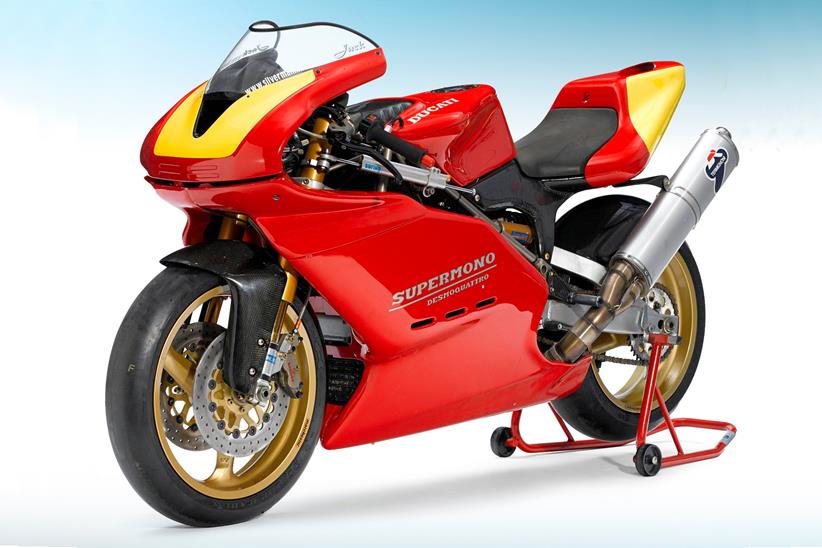
Bologna’s last single-cylinder sportsbike is a real racing unicorn
By Emma Franklin DEPUTY EDITOR
Ducati lay claim to some of motorcycling’s most desirable and exclusive models. Yet one sits above all else in terms of scarcity, mystique, and value: the 1993 Supermono.
Small, stunning and saturated with exotic materials, the 549cc production racer was designed to showcase Ducati’s technical prowess in single-cylinder racing, and show how far modern materials and methods could evolve the most basic of four-stroke configurations.
An instant winner, the Supermono took victory in its first year of competition, clinching the 1993 European Supermono championship in the hands of Italian Mauro Lucchiari. In 1995 it won at the Isle of Man TT, Kiwi Robert Holden giving Ducati their eighth and, to date, last TT victory.
It was to be more than just a race bike, too, as a road-going version was also promised.
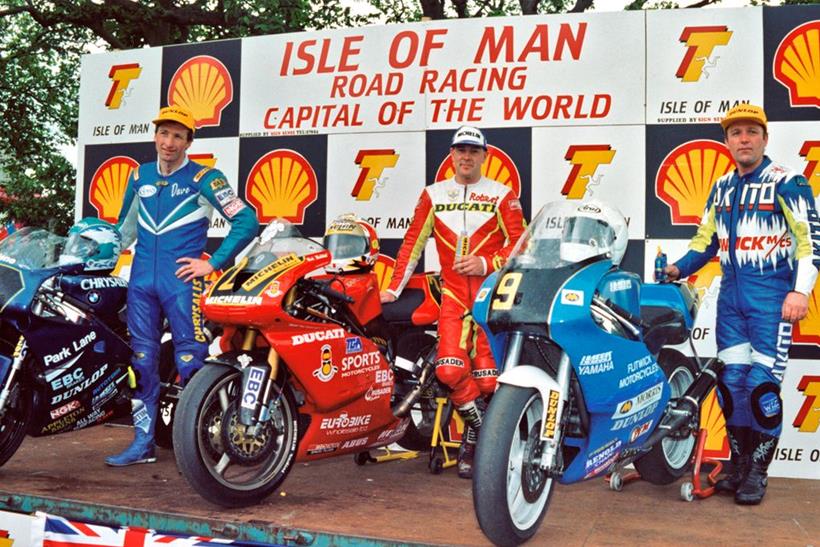
However, despite its appeal and racing success, the Supermono project was snuffed out after just two years, and only 67 examples were built. The long-awaited road bikes were never seen.
It’s because of this unfulfilled promise and unicorn-like rarity that Supermonos today command prices upwards of £100,000.
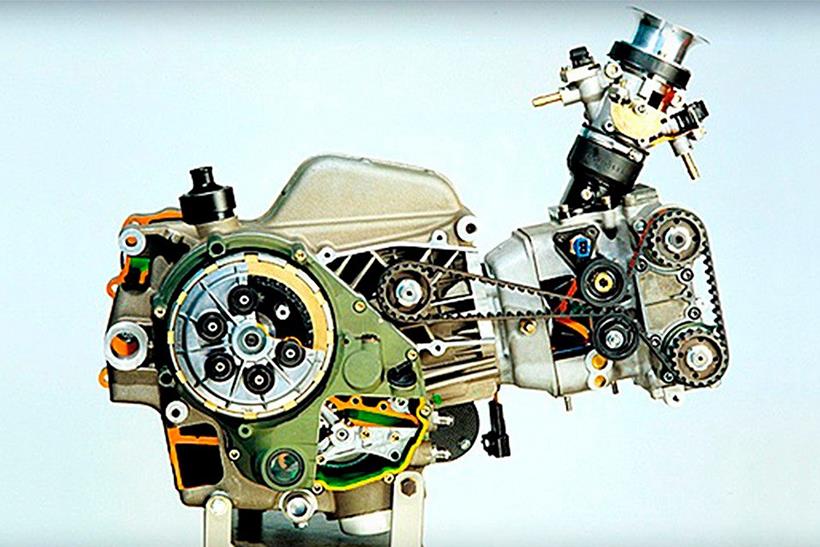
Ducati’s Chief Engineer Massimo Bordi got the concept underway in 1990, creating a 487cc single from the 90-degree V-twin of the firm’s World Superbike-winning 888, complete with desmo valve train and electronic fuel injection. Bordi’s prototype kept both cylinders but used only the vertical bore to provide power; the horizontal was run without a head so that its piston acted as a balancer to cancel out the vibes that typically plagued singles.
Although it proved as smooth as a V-twin, the extra drag of the dummy piston resulted in power losses which forced the engineer back to the drawing board.
‘Bordi’s solution was to create a double conrod set-up’
His solution was to amputate the dummy piston and simply make use of a double conrod set-up. Known as ‘doppia bielletta’, it worked by adding a lever joined at right angles to the small end of the balance conrod, with the other end of the lever fixed to the crankcase. It not only kept the things smooth, it also negated the previous design’s frictional losses, while resulting in a more compact engine. The added upshot for the rider was that, as it was essentially a ‘crossplane’ single, it provided glorious traction.
Further refinement saw the bore increase to 100mm, whilst stroke was increased by a further 2mm to 70mm to create 549cc and a peak power of 75bhp at 10,500rpm.
Development of the Supermono was then placed in the hands of a young project lead named Claudio Domenicali. Now the firm’s CEO, in the early 90s Domenicali was fresh out of university and in his first major role with Ducati.
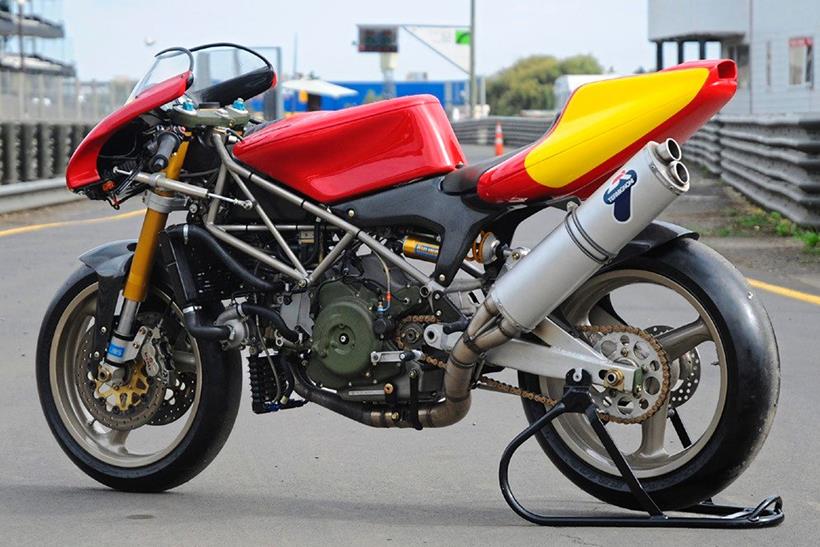
With the motor tamed of vibes, the development team could use the engine as a stressed member allowing the frame to be both extremely stiff whilst also remaining lightweight. The blend of 22mm and 16mm diameter steel tubes resulted in a frame that weighed just 6kg, reputedly the highest stiffness-to-weight ratio of any Ducati produced at the time.
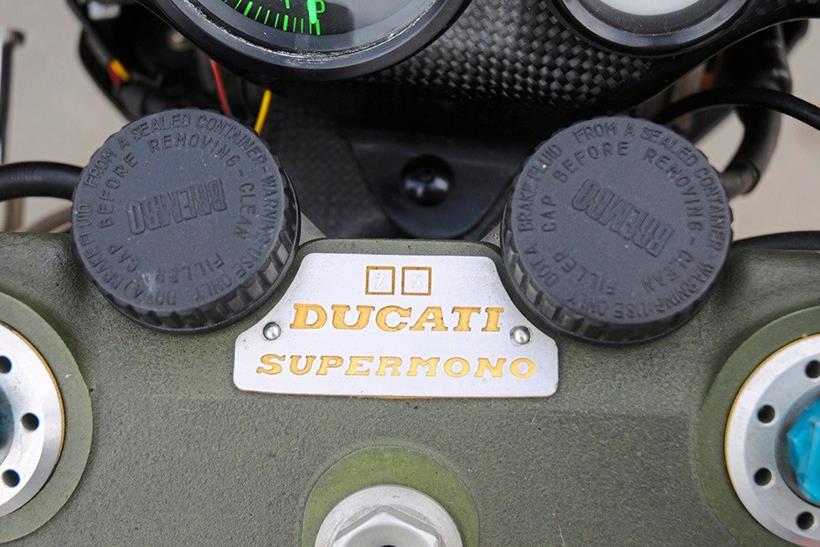
Other chassis delights included magnesium triple clamps, race-spec Öhlins, 280mm Brembo discs, and lashings of carbon-fibre.
With just three months before it was due to be revealed, Pierre Terblanche then gave the monocylindric masterpiece its supermodel looks in his debut project as a young designer.
The world got its first glimpse of the Supermono at the 1992 Cologne show – alongside another key Ducati, the game-changing M900 Monster – the popularity of which was the likely reason why the promised roadgoing Supermono never came to fruition.
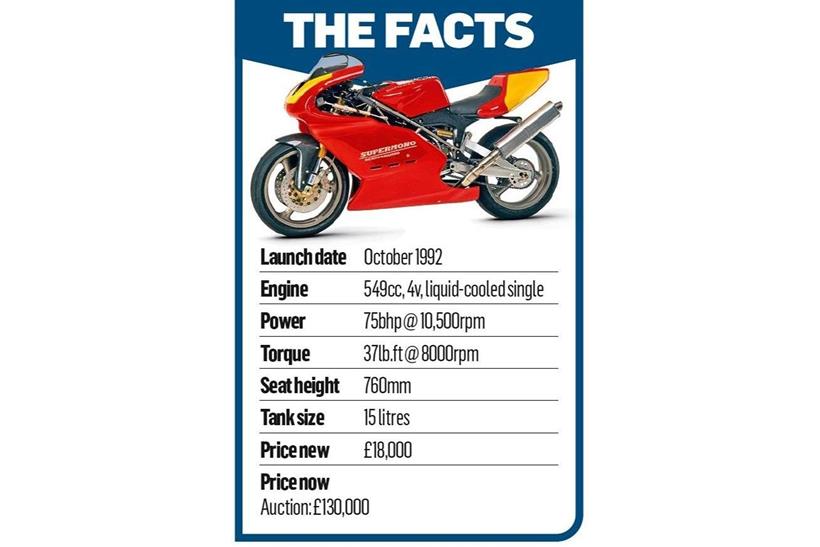
RACING RIVAL – MZ SKORPION
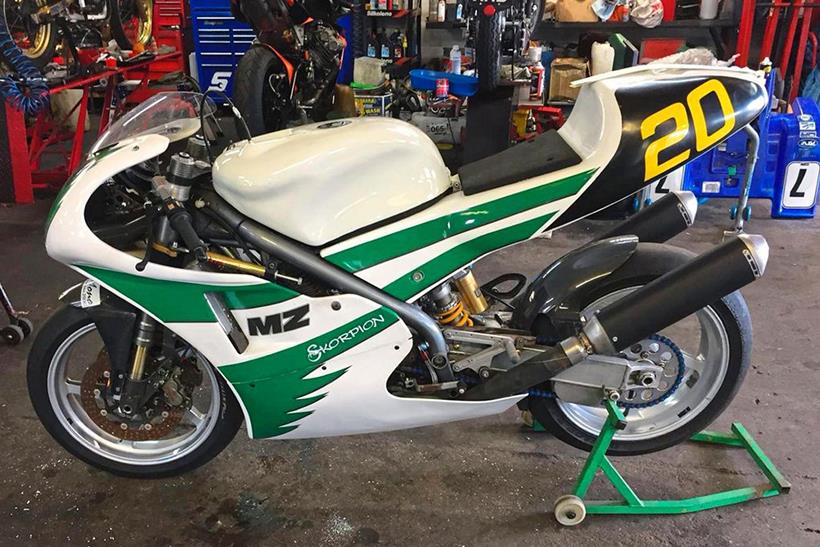
Supermono racing was a prototype class featuring bikes that used dirt bike singles, like Suzuki’s DR800 or Yamaha’s XT660, wrapped in beautiful lightweight frames made by Over Racing, Harris and Spondon. So Ducati’s Supermono stood out as the only production racer on the grid. However MZ also fielded a factory bike called the Skorpion which featured a five-valve XT660 motor inside a Tigcraft frame. The prototype spawned a road-going version, the 1994 Skorpion Replica, which featured the XT660 motor wrapped in a steel tube frame, lightweight Marchesini wheels, and top-spec Brembo brakes, meaning that it certainly knew how to go around corners.
I OWNED AND RACED A SUPERMONO!
‘It was like a demented road drill’
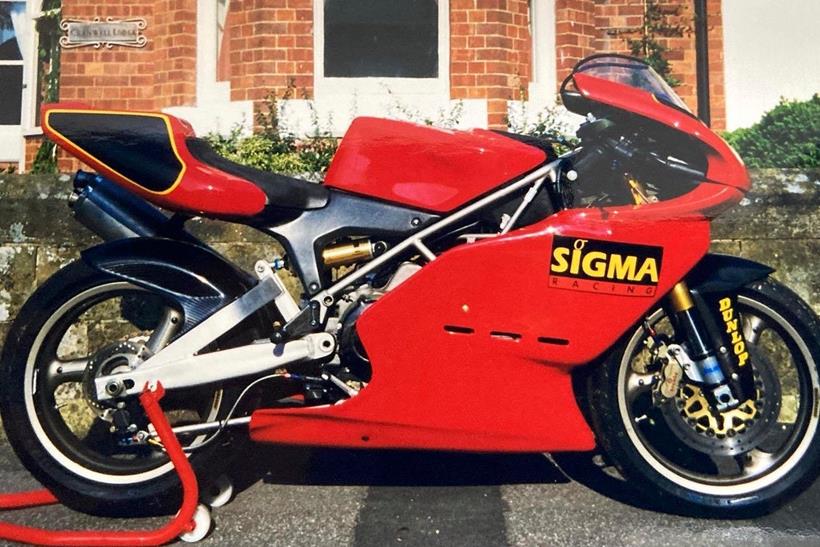
After being laid off from his banking job in 1997, Neil Spalding of Sigma Performance spent his redundancy on a Ducati Supermono.
“They were the machine! I always wanted one, and then while I was in Japan for a Supermono race, I got word of two for sale in Germany. Next thing, I’d changed my flight home and was en route to Germany… do I do with it? Cook Neilson was a hero of mine, who won a Superbike race at Daytona on a Ducati 750SS. I thought, ‘I’m going to take this thing to Daytona and do a Cook Neilson!’
“We started taking it apart and I learned so much… including that the intake system was robbing it of 7bhp! I then asked Jon Cornwell to ride it at Daytona, and he won!
150mph at Daytona, and it sounded like a demented road drill. Our riders would say, it’s not a four-stroke 250, you ride it just like a 125. You keep the speed up, and flow it. It’s basically a fat bastard’s 125!
“I raced it myself twice, once at Brands where I did my fastest ever laptime despite not having raced for three years, and also at the Misano WSBK Supermono round.
“After that, I sat down and thought, what am I going to do with it? It spent most of its life sitting in the dining room, but it was silly because it was
worth more than the dining room! So I sold it and used the money to set up Sigma, so for me it’s an absolutely transformational bike.”
Subscribe to MCN to find out more about these amazing bikes every week










